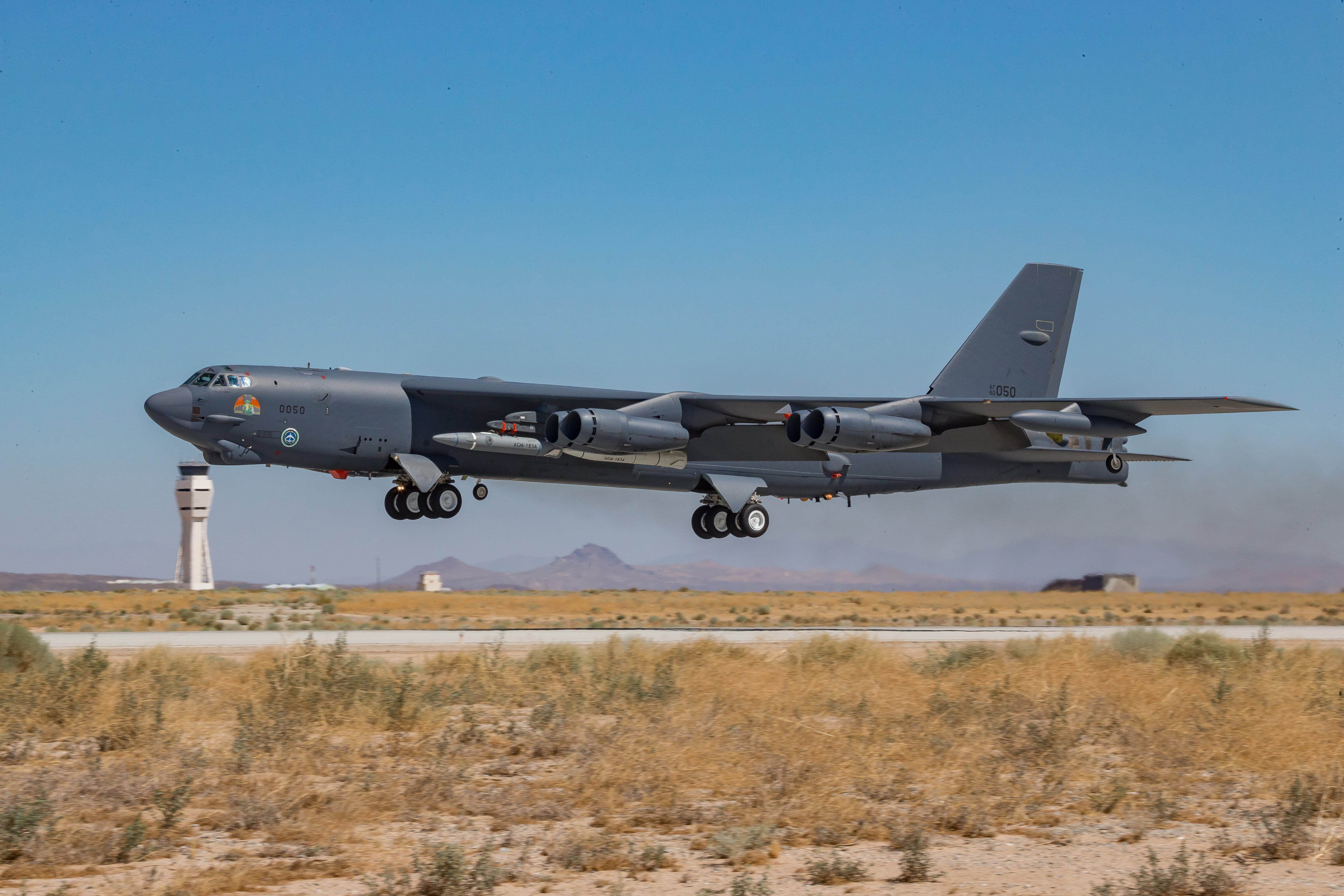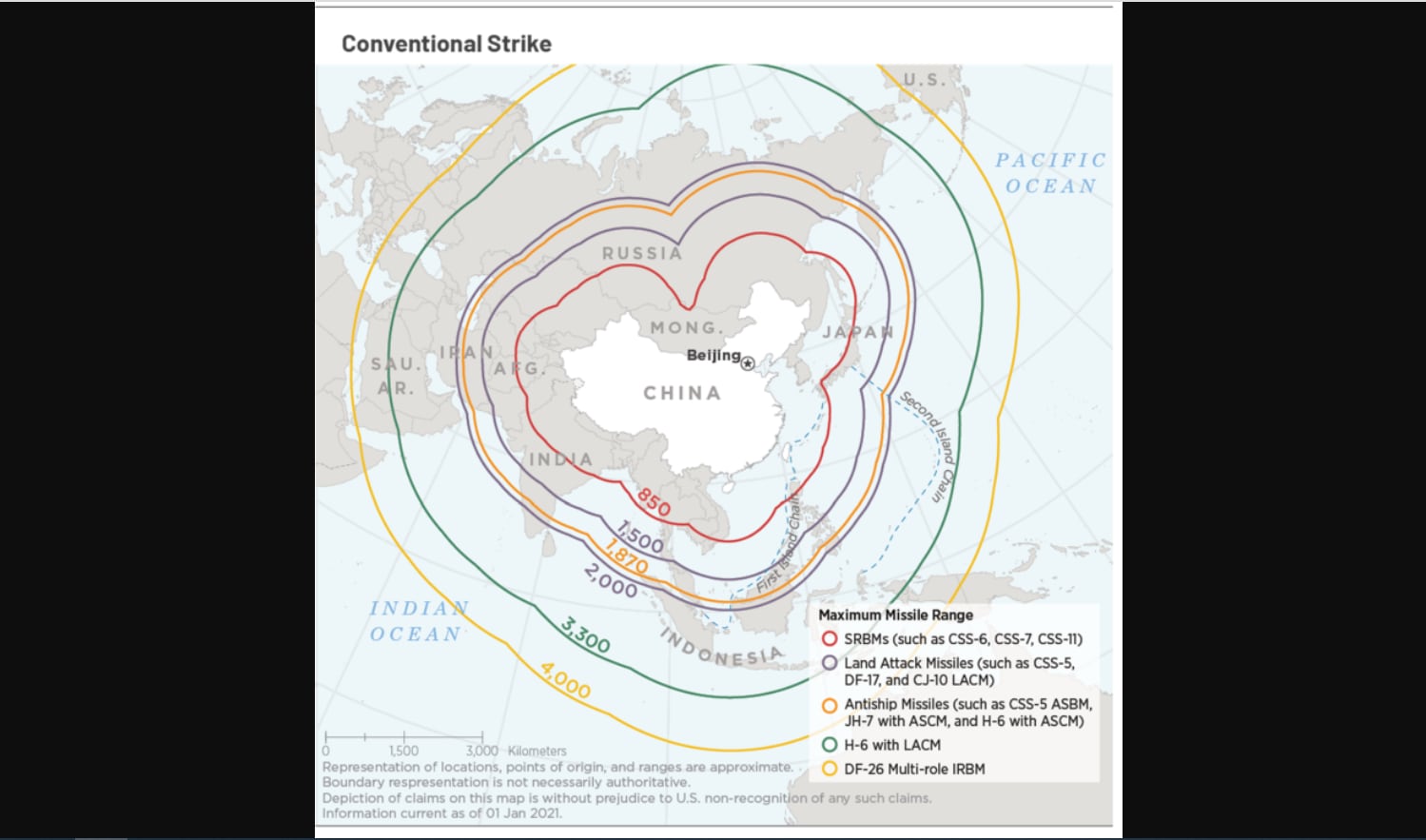House Armed Services Committee members grilled Pentagon leaders Tuesday on why the U.S. military continues to lag behind China in developing hypersonic missiles and defenses that can counter the next-generation ordnance.
One of the leaked Pentagon intelligence documents, obtained by Navy Times, shows that Beijing tested a hypersonic missile this year that could hit targets beyond Japan and the U.S. territory of Guam, where U.S. forces are based, and carry a “high probability” of besting American ballistic missile defenses.
It’s the latest reminder that despite billions of dollars spent, and a defense budget that keeps growing, the U.S. still trails China’s progress developing key cutting-edge weaponry, raising uncomfortable questions about how America would fare in a shooting war in the Pacific.
Beijing’s February test saw the DF-27 cover 2,100 kilometers, or 1,300 miles, in just 12 minutes, according to the leaked records. Past Defense Department assessments have warned of even longer DF-27 ranges.
“Their progress is undeniable,” Rep. Doug Lamborn, R-Colo., said at the hearing. “By contrast, our progress has been slow and has lacked urgency.”
U.S. Indo-Pacific Command leader Adm. John Aquilino admitted the Pentagon is behind Beijing on hypersonic weapons and the systems to defend against them, agreeing that progress “needs to go faster.” The man charged with potentially leading a war against the ascendant power called the velocity of China’s nuclear breakout “concerning,” but said direct conflict is not inevitable.
RELATED

While the Defense Department has declined to confirm the authenticity of the leaked records, such systems could negate a U.S. aircraft carrier’s ability to even get into a Pacific fight for fear of getting sunk, raising questions about whether carriers could help defend against a Chinese invasion of Taiwan.
The leak is not the first warning about China’s burgeoning hypersonic power, but it’s the latest indication that the United States has fallen behind on this technology. The Air Force reported in March that a recent U.S. hypersonic weapon test “was not a success.”
Rep. Adam Smith, D-Wash., the committee’s ranking member, noted that hypersonic funding has lagged through administrations on both sides of the aisle, even as money is now being poured into the effort.
The defense officials declined to comment when Rep. Matt Gaetz, R-Fla., asked whether China has surpassed the United States in the hypersonic race, saying they could only talk about that in a classified briefing.
“Well, it’s been sort of unclassified without our consent,” Gates said, holding up a printed page that appeared to be from the leaked Pentagon intelligence records showing a Chinese hypersonic traveling 2,100 kilometers in 12 minutes.

Gaetz noted that Aquilino testified before the Senate Armed Services Committee last year that the U.S. was falling behind.
“We need a capability in the near term that we do not have,” Gaetz said. “What this leak shows is that China has it, and we don’t.”
While condemning the leaks, for which the FBI arrested Air National Guardsman Jack Teixeira last week, the Florida Republican asked whether more people should be held accountable for the sorry state of American hypersonics.
“Who’s going to be punished more, the knucklehead who leaked this information, or the generals and admirals and so-called experts who have sat before this committee and the Senate for decades saying that these capabilities that we were funding with gajillions of dollars were going to sufficiently deter China?” Gaetz said. He also questioned the wisdom of building U.S. aircraft carriers for the last 30 years that may never enter battle because they are unable to defend against the Chinese hypersonic threat.
Geoff is the managing editor of Military Times, but he still loves writing stories. He covered Iraq and Afghanistan extensively and was a reporter at the Chicago Tribune. He welcomes any and all kinds of tips at geoffz@militarytimes.com.






